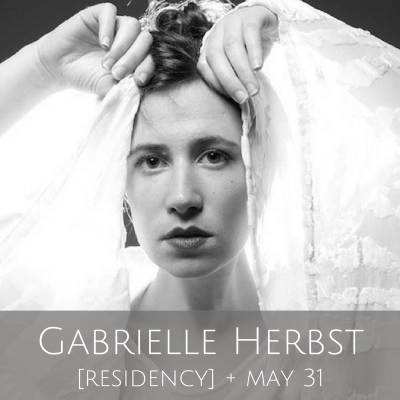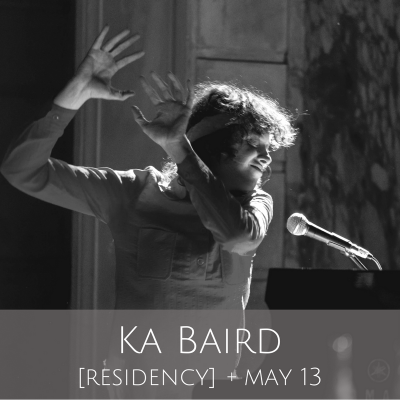Photo: Tom Saccenti courtesy New Sounds
[RESIDENCY] Gabrielle Herbst: Vulnerability
Thursday, May 31, 2018 @ 8:00 pm
Tell us about yourself and what you do.
I am a composer and vocalist currently living in Brooklyn. I went to Bard College in upstate New York and am originally from the Berkshires in Massachusetts.
I compose from a very intuitive place – not starting from a set of compositional rules, but rather from a place of openness, improvisation, and spontaneity. I’m interested in creating spatialized architectural sound that engulfs the listeners and transports them into a different state through color and texture. I compose for all instruments with the mindset of writing for the human voice: I imagine clarinets, cellos, and timpani singing. Vocal music has healing qualities that I think our culture is deeply in need of right now –returning to the source, the breath, the heartbeat. My music is very much seeking a return to the body – exploring sensuality and sensory perception, while clearing the busyness of the mind.
I am interested in experimenting with electronics and live processing in performance because I think it embodies our socio-technological environment, and I’m intrigued with digital sounds creating organic, beautiful sonic spaces.
I’ve been exploring two sides of my musical self – one as GABI and the other as Gabrielle Herbst. As GABI I compose short form songs for my own voice and small instrumental ensembles as well as electronics. Sometimes I perform solo, and much of GABI has been developed in the studio and taken on tour.
Under my full name, I compose operas and varied configurations of instrumental and vocal music in a more classical vein. The two intersect in many ways and influence each other, feeling like two characters of my personality – GABI being more raw and emotional, Gabrielle Herbst a little more orchestral, calculated and structured, utilizing standard notation. For GABI music, I often do not use standard notation and develop songs more on intuition, composing by ear and improvisation. In both projects, I am influenced by opera singing, vocal traditions from many world cultures, and pop singing, creating my own take on contemporary vocal and instrumental music.
Describe the project you are developing for Roulette.
Written for two voices and two loop pedals, electronics, harp, violin, cello, flute, piano and clarinet, the opera I’m composing for this Roulette Residency explores themes of personal and collective vulnerability, anxiety, fear and struggle – investigating self-care and interpersonal relationships within our current sociopolitical climate. Progressing through dreamlike non-narrative tableaux, with close harmonization, textural rhythms, melismatic vocals, electronics and cross-genre pollination, this opera looks at inward struggles and connecting outwards. It will be performed by the Nouveau Classical Project, joined by Marilu Donovan on Harp as well as myself and Charlotte Mundy as the vocalists.
What is your first musical memory?
My dad singing. He is an amazing singer and used to sing to me as a baby.
How did you become involved with Roulette?
When I first moved to NYC after college in 2009 I set up a meeting with Jim and he was so incredibly supportive. I instantly become involved in the Roulette community, first as a sound intern, then working in the box office, and then as an artist. I’m forever grateful.
What is it like living and working in New York City?
Difficult but so fulfilling. I find the struggle of keeping up, both financially and artistically really beneficial to my work.
Describe your performance at Roulette in three words.
Vulnerable. Vocal. Raw.
Describe Roulette in three words.
Beautiful. Open. Unexpected.



